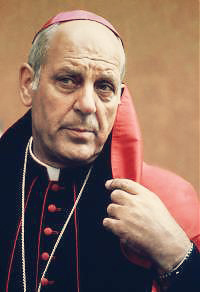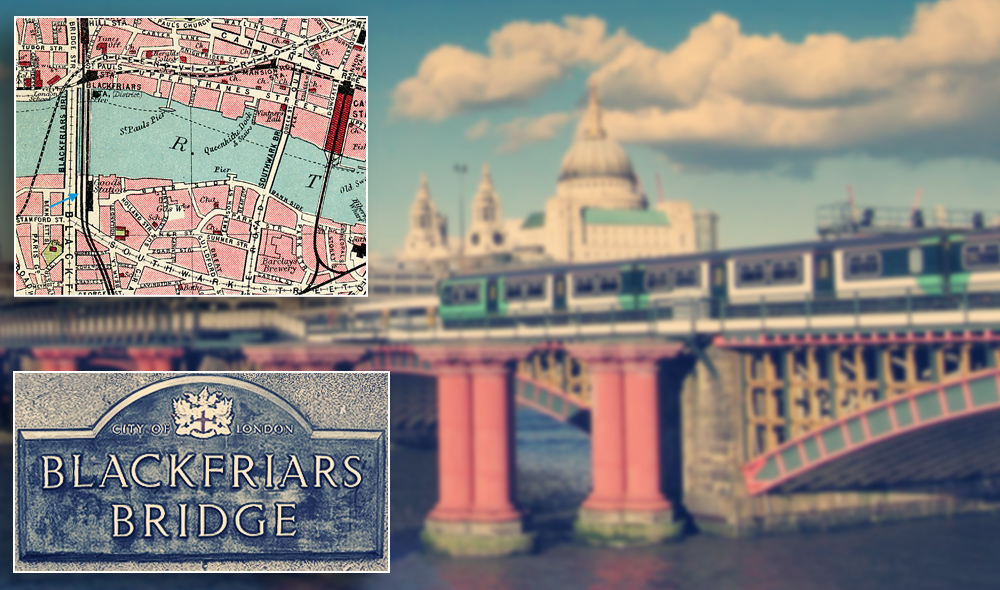THE MURDER OF POPE JOHN PAUL I
Maybe none of these examples might prove the veracity of such truth as much as the assassination of Pope John Paul I. His death came in September 1978, only 33 days after his election (number 33 was not intended to be a symbol for Christ's age, but rather the highest degree in freemasonry).
The suddenness of the death, together with the Vatican's "difficulties"
with the ceremonial as well as the secrecy surrounding the legal death
procedures – such as the inability to issue a legitimate death
certificate – have resulted in a few theories.
Catholic Traditionalist Movement (CTM), founded by Fr. DePauw, indicates he was asked to relocate in Rome to help John Paul I reestablish the Tridentine Mass, the original format of the Mass prior to the changes brought by the Second Vatican Council.
[Fr. DePauw] stated on the 15th anniversary of the Pope’s death: "Well,
I tell you one thing, if he had remained Pope, you wouldn’t have me
here at the Chapel because with that beautiful official letter signed by
the Secretary of State, also came an unofficial message that I better
start packing my suitcase, that there was a job waiting for me in Rome,
in the Vatican, to help Pope John Paul I bring the Truth back to the
Church. Well, it wasn’t to be and the Lord, Who knows what He does,
obviously wanted me to be in this Chapel … what was I going to do in
Rome? Well, let’s just forget it …"Other prominent Traditionalist Catholic websites, not related to CTM, have stated that John Paul I may have been assassinated to prevent restoration of the Tridentine Mass. Malachi Martin's book "Vatican: A Novel" is a novel based on recent papal history. Although officially a work of fiction, Martin proposes the theory that the pope was murdered by the Soviet Union because he would abdicate the benign policy of his two predecessors, John XXIII and Paul VI, towards accommodating communism, and once again condemn it as an atheistic totalitarian ideology. Martin believed that the church structure was infiltrated for decades by Illuminati agents who reached positions of high influence and rank, such as Jean-Marie Villot, at that time Cardinal Secretary of State.
We should not forget that only four years after the assassination of Pope John Paul I, on June 17 1982, chairman of Italy's second largest private bank Banco Ambrosiano and member of P2 Masonic Lodge Roberto Calvi died in a to-be-noticed-at-all-costs suicide in London, where he was found hanging from scaffolding beneath Blackfriars Bridge on the edge of the financial district of London. Calvi's clothing was stuffed with bricks, and carried around $15,000 worth of cash in three different currencies. In Terry Gilliam's The Imaginarium of Doctor Parnassus (2009), Heath Ledger's character Tony is found hanging under the Blackfriars Bridge, with an All-seeing-eye designed on his forehead. The filming of the movie stopped due to the sudden "mysterious" death of Heath Ledger, who was found unconscious by paramedics at 3:33 pm.

Attached to Roberto Calvi was the name of Paul Marcinkus (January 15, 1922 – February 20, 2006), an American archbishop of the Roman Catholic Church (see photo on the left). He was best known for his tenure as President of the Vatican Bank from 1971 through 1989.
As early as April 24, 1973, Marcinkus was questioned in his Vatican office by federal prosecutor William Aronwald and Bill Lynch, head of the Organized Crime and Racketeering Section of the United States Department of Justice, about his involvement in the delivery of $14.5 million US worth of counterfeit bonds to the Vatican in July 1971, part of a total request of $950 million US worth stated in a letter on Vatican notepaper.
His name and the official letter had arisen during the investigation of an international gangster, who eventually served twelve years in prison. Marcinkus "said he considered the charges against him serious but not based enough on fact that he would violate the Vatican Bank's confidentiality to defend himself. …back in the States it was agreed on the highest levels that the case against Marcinkus could not be pursued any further."
In July 1982, Marcinkus was implicated in financial scandals being reported on the front pages of newspapers and magazines throughout Europe, particularly the collapse of the Banco Ambrosiano, in which Propaganda Due (P2), an illegal Masonic Lodge, was involved (Marcinkus had been a director of Ambrosiano overseas in the Bahamas, and had been involved with Ambrosiano's chairman, financier Roberto Calvi, for a number of years). He was also involved with Michele Sindona, who had links with the Mafia.
In 1984, Marcinkus was named as a possible accomplice in the supposed murder of Pope John Paul I by investigative journalist David Yallop in his book In God's Name. Yallop made allegations regarding a number of suspects associated with Marcinkus' business dealings, claiming involvement of members of the Mafia on behalf of the Vatican Bank, further stating that Marcinkus might face criminal exposure, should he be removed from his position at the bank. Upon publication of his book, Yallop agreed to donate every penny he made from sales to a charity of the Vatican's choice if they agreed to investigate his central claim, that when the body of the pope was discovered, his contorted hand gripped a piece of paper that was later destroyed because it named high-ranking members of the curia who were Freemasons and others who had a role in numerous corruption scandals and the laundering of mafia drug money. One of the names believed to be on the paper was that of bishop Paul Marcinkus.

Upon the election of Pope John Paul II, Marcinkus remained in office for several years before the scandal widened, after the body of Calvi, whose Banco Ambrosiano had dealt with Marcinkus, was found hanging under London's Blackfriars Bridge in June 1982. The death of Calvi was seen by some as symbolic, since Propaganda Due referred to themselves as the "Black Friars".
Adding to the troubles, journalist Mino Pecorelli, who had been investigating Marcinkus, the Vatican Bank and ties to organized crime, was murdered in 1979. Marcinkus himself was never charged with a crime. He stepped aside as head of the Vatican Bank soon after, with a board of laymen assuming control of the bank. The Vatican eventually paid £145 million in a settlement with creditors, with Marcinkus observing in 1986 that: "You can't run the Church on Hail Marys." Markincus later said that he was misquoted, what he actually said was : "When my workers come to retire they expect a pension; it's no use my saying to them. 'I'll pay you 400 Hail Marys." Reminds us of a certain Pope Francis when saying "…those who count the prayers"?
Pope John Paul I was killed by poisoning, according to repentant Vincenzo Calcara who gave his testimony to Paolo Borsellino, Italian anti-Mafia magistrate killed by a Mafia car bomb in Palermo 57 days after his friend and fellow Antimafia magistrate Giovanni Falcone was assassinated.
Calcara wrote down his exchange with Mafia member and politician Michele Lucchese, a member of a secret masonic lodge; this conversation had taken place immediately after the attempted assassination of John Paul II, which the Mafia had been involved in indirectly.
Mr Lucchese revealed to Calcara that John Paul II was carrying on the same plans to "break the relations inside the Vatican" which John Paul I was intentioned to accomplish. Calcara talked about a "plot" formed by four cardinals (Jean-Marie Villot, Pasquale Macchi, Giovanni Benelli and someone by the name of Gianvio) who, through Marcinkus, had Pope Luciani killed via large doses of tranquilizers.
Calcara has been declared plausible in his statements through the ninth penal code of the Tribunal of Rome in the sentence of June 6, 2003. For now, though, there are no further developments due to the Vatican's disavowal of any autopsy.
Why have we illustrated such buried story? Because this is reality. This, ladies and gentlemen, is how the world works behind the blood-red carpet on which the powerful of the earth walk. Satan needs blood for his purposes, and those serving him are willing to do anything in order to obtain the temporal power he can grant unto them.
